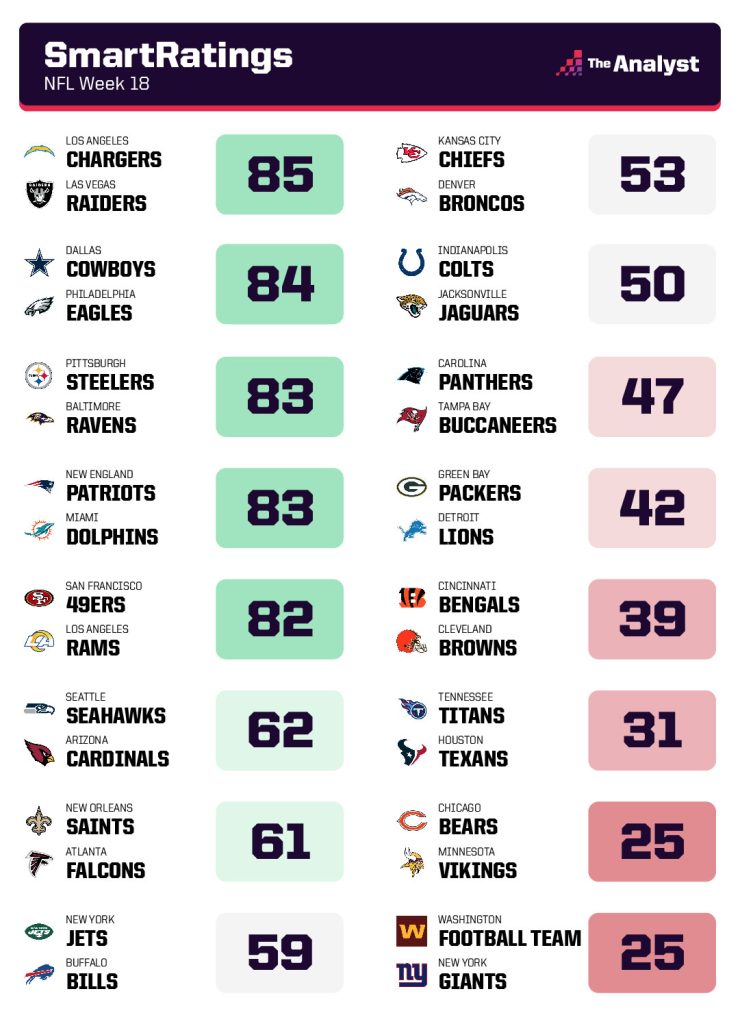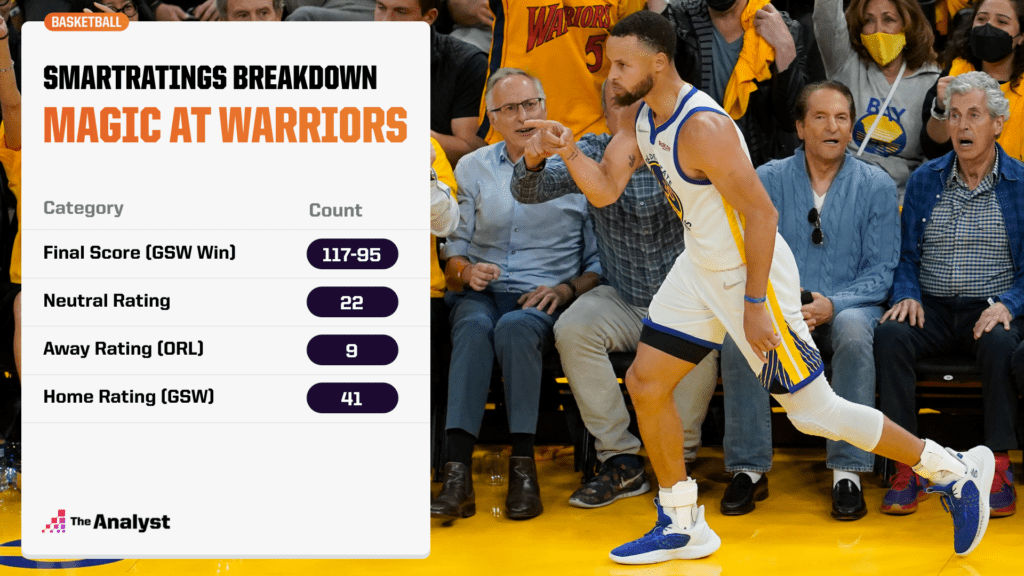If you asked people which games were the most intriguing on a given Sunday, you might get a hundred different responses depending on rooting interests.
Who has been the most exciting player in the league in recent weeks? It’s likely you’re going to take a highly subjective road to that answer.
But we can actually put data behind the answers to those questions and more by looking at SmartRatings, which provide a bit of an unbiased guide to the best games and most exciting players sports have to offer.
SmartRatings is an AI-based platform that calculates excitement ratings and real-time headlines for sporting events. The excitement scale, ranging from 0-100, is powered by complex algorithms that are predicated upon six primary variables: pace, parity, novelty, momentum, context and social buzz.
The weight of each variable is dynamic and adapts as a season progresses, and the excitement scale translates to the following general sub-ranges: 0-39 (Dull Game), 40-64 (OK Game), 65-84 (Good Game), 85-100 (Great Game).
As an example, here’s what Week 18 of the 2021 NFL season looked like:

As you can see, the AFC West showdown between the Los Angeles Chargers and Las Vegas Raiders was the highest ranked game of the week.
It also fell into the “Great Game” category because the teams’ records were identical (indicating parity), they’re divisional rivals (increasing novelty), and most critically, it was a likely win-or-go-home scenario, making the context of the game as significant as possible for a regular-season matchup.
These can also be broken down into home and away ratings, which are biased for that fan base’s perspective, as well as a neutral rating. So a blowout might be boring for the neutral fan (and thus rated very low), but it would be rated higher for the winning team and lower for the losing team.
Here’s an example:

At the player level, the ratings are calculated by using a combination of player performance and exciting plays within those performances. So a player who had a lot of dunks and 3-point field goals is likely to have a better rating than a player who had mostly midrange jumpers or free throws.
Let’s use an example from our fictional Warriors-Magic game. If Steph Curry finished with 29 points on 11-of-22 shooting – including 4 of 9 from 3-point range – to go along with eight assists, five rebounds and a steal, he’d post a game excitement score of 86 (out of 100).
So next time your buddy tells you his favorite player is the most exciting star in the league, you’ll have the SmartRatings data that puts numbers behind why he’s wrong. Sorry, pal.
